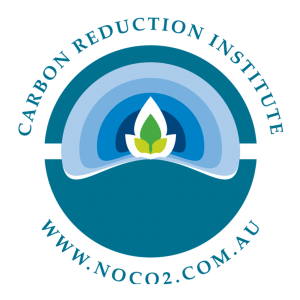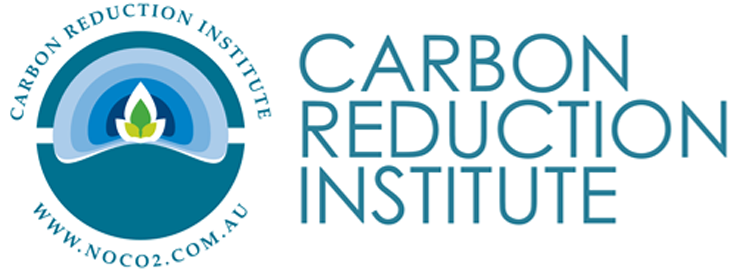Carbon Offset Guide
The complete guide to carbon offsetting
Carbon Offset Guide






- Carbon Offsetting under the NoCO2 Program
- How does offsetting work?
- CRI’s Carbon Offset Criteria
- Registration and Retirement of Carbon Offsets
- Project Types
- Project Standards
- Further Notes on Kyoto and Non-Additionality
- How to buy carbon offsets
- How do carbon offsets work
- Australian carbon credit units
The Carbon Reduction Institute Guide to Carbon Offsetting

The following information been produced by the Carbon Reduction Institute (CRI) to provide its clients with information about carbon offsetting. CRI is one of Australia’s most reliable and experienced carbon consulting companies and ranked as an ‘Outstanding’ provider in the Total Environment Centre (TEC) and Choice magazine’s Carbon Offset Watch. It should be noted that the carbon offset market is continually changing and the information provided here is accurate at the date of publication. This document cannot be reproduced without permission.
Carbon Offsetting under the NoCO2 Program
Once undertaking a carbon audit, NoCO2 clients achieve certification through the purchase of carbon offsets that adhere to the standards outlined in this document. In most instances, CRI will purchase carbon offsets on behalf of its clients. CRI bulk purchases carbon offsets from carefully selected projects which meet both the requirements of the National Carbon Offset Standard (NCOS) and CRI’s own stringent requirements outlined in this document. In the instances where clients choose to purchase carbon offsets from other sources, these offsets must meet CRI’s criteria and be verified by CRI before certification will be granted.
How does offsetting work?
Carbon offsetting is a mechanism that allows organisations and individuals to invest in projects which mitigate climate change to counter their own unavoidable emissions. Carbon trading is where units of carbon offsets (1 tonne CO2e emissions = 1 ‘carbon offset’ or ‘carbon credit’) are traded on an open market. There are voluntary carbon offsets and mandatory carbon credits for compliance schemes in different countries throughout the world.
Carbon offsets can be generated from a range of projects that reduce emissions. Examples include energy efficiency, methane composting and flaring, biomass and renewable energy programs. These projects reduce or displace otherwise polluting alternatives which are generated from mining and combusting fossil fuels.
There are a number of programs that outline standards for validating and verifying the emission reductions created by these projects. Project accreditation gives comfort to the buyer and a guarantee that the project meets a minimum standard. However, many of these programs have differing standards for ensuring the veracity of the carbon savings deemed from the projects that they accredit. Different projects, even with the same accreditation can have different outcomes for the environment. This is why CRI always maintains that it is the project and not the accreditation program that must be judged in order to determine whether an offset is suitable.
The section below outlines criteria against which CRI will judge individual projects, alongside considering the standards they are accredited under.
CRI’s Carbon Offset Criteria
It is important that carbon offset projects are tested against standards for assurance that they are funding a reduction of greenhouse gas from the atmosphere that would not have otherwise occurred. Any carbon offset used by an organisation to meet emission reduction requirements under the NoCO2 certification program must:
Be financially additional
For a carbon offset to be financially additional, the money from the offsets must have been required to make the project happen beyond ‘business as usual’. Projects often fail this test where they are cheaper than their more polluting equivalent, or their energy savings pay back in time frames that make it a ‘business as usual’ proposition.
Be environmentally additional
The project must be additional to the existing environment; that is, carbon offsets cannot be claimed on situations that would have occurred anyway. A good example is the natural growth of a forest or the implementation of an activity that would have occurred through legislation or a shift in market demand. Furthermore, carbon savings from a carbon offset must be additional to a country’s mandatory Kyoto target. For countries/states with a binding target, such as Australia, NZ and the EU, (from 2008-2012), this can be achieved through the Joint Implementation mechanism, or through sourcing carbon offsets that pre-date the Kyoto commitment period. More information about Kyoto is provided later in this document.
Be permanent
Permanence is a very important requirement for a carbon offset. Carbon savings that have been forward claimed or carbon emissions that have been stored can present a liability risk for any party using them to make a claim. If the emissions fail to happen, or are released into the atmosphere, and the project proponent does not make good on this reduction, then the liability may fall back on the purchaser who made a claim, to rectify the issue.
Not create leakage
Leakage is where a project results in an increase of emissions elsewhere. This is a major risk in avoided deforestation projects where the removal of one section of forest product from the market encourages the destruction of forest in another due to inelastic demand.
Be validated and verified
The project must use a methodology that conservatively quantifies its emissions reductions through a scientifically valid approach. The project must be audited by an independent third party to quantify the number of tonnes of greenhouse gas that it has saved. This can occur through ISO 14064.3 and 14065; through a GHG program, or through using an approved methodology from a GHG program.
Registration and Retirement of Carbon Offsets
Once the project has gained verification from one of the main standards outlined below, all offsets must be electronically serialized and make their way onto one of the main registries. These are typically, the ‘Markit’ Registry and the ‘Gold Standard’ Registry. From this point the offsets can be traded and sold between parties. The offsets, once sold and used towards a marketing claim must be retired from the market, meaning they can no longer be traded or sold.
Project Types
There are many different types of climate change mitigation projects which can achieve carbon savings and become registered carbon offsets. The most common greenhouse gas offset projects involve:
- Renewable energy (including wind, solar, geothermal, landfill gas capture, biomass and hydro generation)
- Energy efficiency (lighting, cook-stoves)
- Forestry/revegetation (bio-sequestration)
CRI currently purchases wind, biomass, hydro generation and cook-stove carbon offsets.
CRI prefers renewable energy and energy efficiency projects over forestry / revegetation projects. This is due to the lack of assurance that can be offered for offsets which are carbon sinks such as tree stocks. Carbon sinks present a risk whereby the emissions can be reversed back into the atmosphere. One of the effects of climate change, with rises in global temperatures, is a shift in climatic zones, causing significant changes in flora and fauna habitats. It is not known whether species will adapt to these changes in time to survive. The uncertainty of offsets generated through carbon sinks means they fail on CRI’s criteria of permanence.
Furthermore, for those making a marketing claim using these offsets, they may wear the risk or liability if the carbon savings from these projects are reversed and the project proponent does not make good the re-sequestration savings.




Project Standards
Once the project has gained verification from one of the main standards outlined below, all offsets must be electronically serialized and make their way onto one of the main registries. These are typically, the ‘Markit’ Registry and the ‘Gold Standard’ Registry. From this point the offsets can be traded and sold between parties. The offsets, once sold and used towards a marketing claim must be retired from the market, meaning they can no longer be traded or sold.
The Climate Active Carbon Neutral Standard (CACNS)
The Australian Government introduced the National Carbon Offset Standard (NCOS) on 1 July 2010 to provide national consistency and consumer confidence in the voluntary carbon market. The standard serves two primary functions – it provides guidance on what is a genuine voluntary offset and sets minimum requirements for calculating, auditing and offsetting the carbon footprint of an organisation or product to achieve ‘carbon neutrality’.
In the context of carbon offsetting, NCOS requires that voluntary offsets meet one of the following standards:
- Australian Emissions Units (AEUs) *
- Certified Emissions Reductions (CERs) – from CDM projects (refer to Clean Development Mechanism section below)
- Emission Reduction Units (ERUs) – from JI projects (refer to Joint Implementation section below)
- Removal Units (RMUs) – issued in respect of net removals by sinks from activities covered by the land use, land use change and forestry sectors under the Kyoto Protocol.
- Voluntary Emissions Reductions (VERs) issued by the Gold Standard also outlined below
- Voluntary Carbon Units (VCUs) issued by the Verified Carbon Standard (VCS) also outlined below
- Offsets generated from emissions sources in Australia not counted toward Australia’s Kyoto Protocol target, where they meet eligibility criteria and use a methodology that has been approved under the Standard.
* The Australian Emissions Units (AEUs) were defined under the Carbon Pollution Reduction Scheme (CPRS). This is likely to be updated soon. With the passing of legislation in favour of the Carbon Tax from July 2012 moving to an Emissions Trading Scheme in 2015, new initiatives and standards are currently being refined. For example, the Carbon Farming Initiative (CFI) had legislation passed in Aug 2011. It will be an Australian Government offset scheme through which participants will be able to design and implement emissions abatement and sequestration projects and receive carbon offsets for the resulting emission reductions. Each tonne of carbon dioxide equivalent emissions that is reduced by a CFI project that is inside our Kyoto commitment, will be rewarded with one Australian Carbon Credit Unit (ACCU). Reductions made by CFI projects outside of Kyoto commitments will also receive carbon offsets to be traded on the voluntary market.
Update: The National Carbon Offset Standard (NCOS) has been renamed to Climate Active Carbon Neutral Standard (CACNS) and has been available to Australian businesses since 2010. The CACNS provides the answer to the question of who can truly call themselves carbon neutral.
Clean Development Mechanism (CDM)
The Clean Development Mechanism (CDM) is one of the mechanisms defined in the Kyoto Protocol and was developed to provide assistance to Annex 1 countries in reaching their emission reduction targets. It is an accreditation program that allows project proponents that register carbon savings from projects in developing countries to validate/verify and register the carbon savings from their projects and trade them.
These savings are issued as Certified Emission Reductions (CER’s). The CDM also serves to assist non-Annex 1 countries with achieving sustainable development and working towards the United Nations Framework Convention on Climate Change (UNFCCC)’s ultimate objective of preventing dangerous climate change. The CDM is supervised by the CDM Executive Board (CDM EB) and is under the guidance of the Conference of the Parties (COP/MOP) of the UNFCCC.
Where credits are issued for reduced emissions from deforestation and degradation (REDD) and other agriculture forestry and land use (AFOLU) projects, they must apply methodologies approved under the Standard.
Carbon Market Institute ‘The Carbon Farming Initiative: A summary guide for businesses’ November 2011
Joint Implementation (JI)
Joint Implementation is a mechanism defined by Kyoto, as with CDM, which is designed to assist Annex 1 countries meet their obligations. It enables any Annex 1 country to invest in emission reduction projects in any other Annex 1 country as an alternative to reducing emissions domestically. Emission reductions are awarded credits called Emission Reduction Units (ERUs), where one ERU represents an emission reduction equalling one tonne of CO2 equivalent.
Voluntary Offsetting Standards
The above mechanisms whilst intended to primarily assist countries to meet their obligations under the Kyoto agreement, do also feed into the voluntary carbon market, in that they have set the benchmark standards for voluntary offsets as well. CRI requires that any carbon offsets meet at least one of the following voluntary standards:
Verified Carbon Standard (VCS)
Formerly known as the Voluntary Carbon Standard, VCS was launched by The Climate Group in 2007. The VCS Program is among the most widely used quality assurance system for accounting for emission reductions in the voluntary carbon market. The VCS provides validation and verification for projects and often accepts projects that have applied CDM methodologies, as well as those that have been double verified against their own ‘VCS Standard,’ which is largely referenced from ISO 14064.2. VCS units are called Verified Carbon Units (VCUs). The VCS is used by many CDM project developers to claim carbon offsets from projects that commenced prior to their official CDM registration date. As VCS units are generally cheaper than CDM units, most projects only claim VCS units for the time up until their CDM registration.
Read about the method under the Verified Carbon Standard.
Gold Standard
The Gold Standard creates high-quality emission reductions projects in the Clean Development Mechanism (CDM), Joint Implementation (JI) and Voluntary Carbon Market. It was designed to ensure that carbon offsets are verifiable and also make a measurable contribution to sustainable development.
The Voluntary Gold Standard (GS VER) is a methodology for use within the voluntary carbon market which was launched in May 2006 by World Wide Fund for Nature (WWF). It was developed from an extensive 12-month consultation process with NGO’s, scientists, project developers and government representatives. Projects which meet this standard have additional social/economic benefits such as providing increased employment opportunities in a disadvantaged region or improving water quality.
Further Notes on Kyoto and Non-Additionality
Australia’s post 2008 emissions are capped through its obligation under the Kyoto Protocol. This means that the government must not exceed its emissions level of 598 Mega-Tonnes of CO2e per year or 2.99 Giga- Tonnes over 5 years from 2008 to 2012 as per its Kyoto requirements. In order to comply with this target, through legislation, the government will delineate responsibility for meeting this cap to major emitters. The government then reconciles its greenhouse gas accounts by collaborating information from all sectors that emit greenhouse gases at the end of each year. It then checks to see whether the suite of policies that it has implemented have achieved the end goal of meeting the country’s Kyoto target.
The function of a carbon offsets is to fund projects achieving greenhouse gas reductions which would not have occurred in the project’s absence. By ratifying Kyoto, Australia created a non-additionality issue for carbon offsets which are generated within Australia. There are some projects which are not counted under Australia’s Kyoto obligation (you can refer to the NCOS website for more information).
It is expected that when Kyoto finishes at the end of 2012, it will be superseded by a new agreement that will continue to provide the framework for countries to limit their greenhouse gas emissions. In the face of this, the Australian Government is harnessing market-based mechanisms (i.e., a Carbon Tax leading to an Emissions Trading Scheme) to ensure that this responsibility is met at the least cost.
Similarly, carbon offsets generated from energy efficiency and renewable energy within Australia fall under the Australian Government’s obligations under Renewable Energy Target.
These barriers to including Australian-generated offsets in the voluntary market (as with the NoCO2 Certification Program) and the release of the National Carbon Offset Standard (NCOS) have resulted in the popularity of quality overseas offsets such as those under CDM or VCS, and sourced by CRI.
How to buy carbon offsets
You can purchase carbon credits through our Carbon Footprint Calculator to offset your individual unavoidable emissions from flights and travel, motor vehicle use, electricity, gas, waste and public transport.
How do carbon offsets work
Although the process may be overwhelming and complicated, it’s in reality simple and effective. Carbon offsets can reduce greenhouse gas emissions by compensating for your greenhouse emissions. It achieves this by controlling greenhouse gas emissions from elsewhere.
Australian carbon credit units
The Australian carbon credit unit is an important instrument in the Australian Government’s effort to reduce emissions from greenhouse gases (CHGs). To obtain credits, the project must follow specialised guidelines and scientific procedures for reducing the emissions generated from certain project activities. This means that the emission reductions have been verified and regulated. The offset credits meet integrity standards to ensure real emissions reduction occurs. Find out more about offsetting your business emissions through our NoCO2 Business Certification.
More information about carbon offsetting projects is also available on our site.
